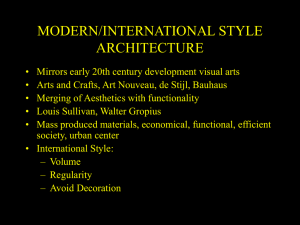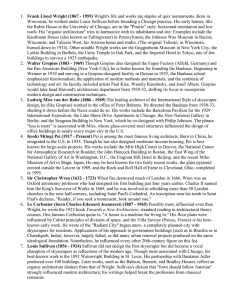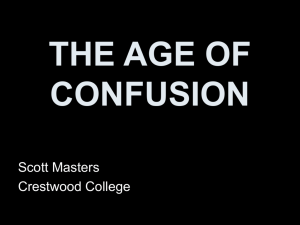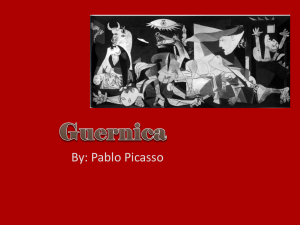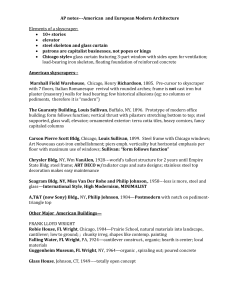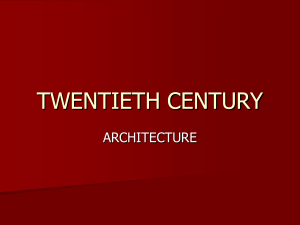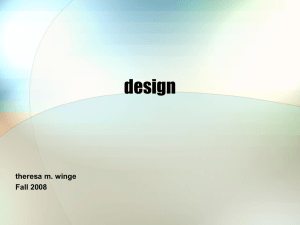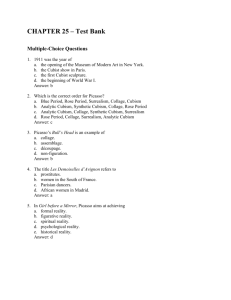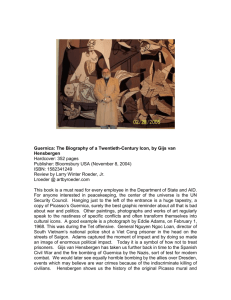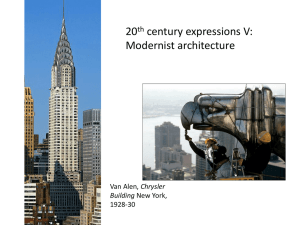Ch 33 Study Guide Questions #2 What connection can be made
advertisement
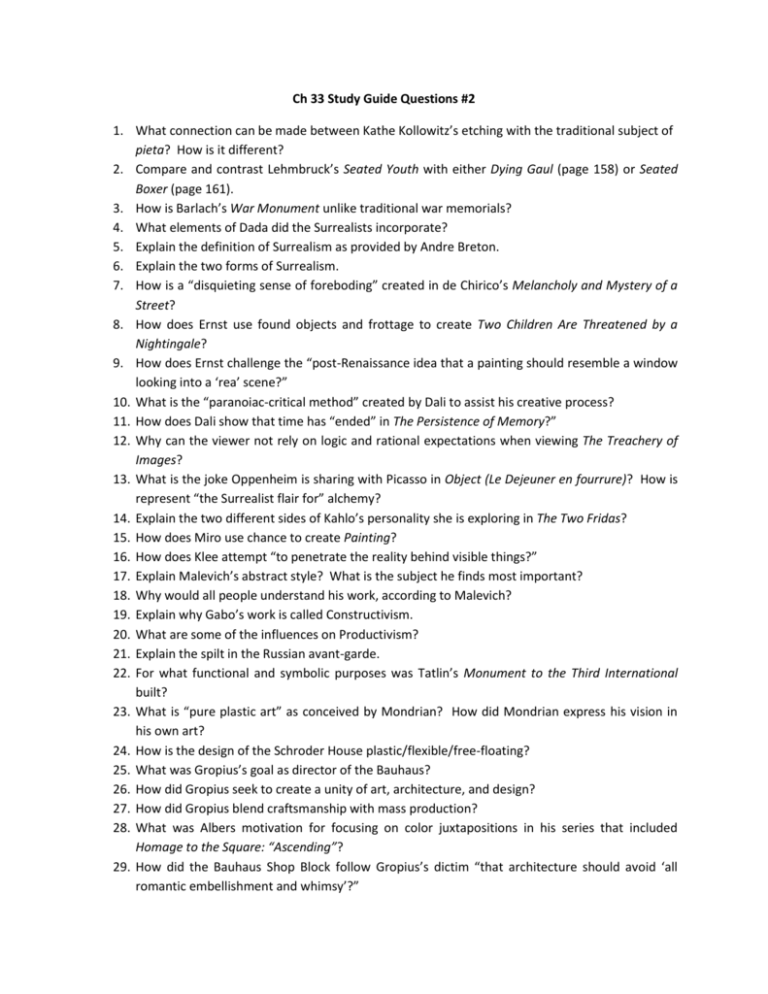
Ch 33 Study Guide Questions #2 1. What connection can be made between Kathe Kollowitz’s etching with the traditional subject of pieta? How is it different? 2. Compare and contrast Lehmbruck’s Seated Youth with either Dying Gaul (page 158) or Seated Boxer (page 161). 3. How is Barlach’s War Monument unlike traditional war memorials? 4. What elements of Dada did the Surrealists incorporate? 5. Explain the definition of Surrealism as provided by Andre Breton. 6. Explain the two forms of Surrealism. 7. How is a “disquieting sense of foreboding” created in de Chirico’s Melancholy and Mystery of a Street? 8. How does Ernst use found objects and frottage to create Two Children Are Threatened by a Nightingale? 9. How does Ernst challenge the “post-Renaissance idea that a painting should resemble a window looking into a ‘rea’ scene?” 10. What is the “paranoiac-critical method” created by Dali to assist his creative process? 11. How does Dali show that time has “ended” in The Persistence of Memory?” 12. Why can the viewer not rely on logic and rational expectations when viewing The Treachery of Images? 13. What is the joke Oppenheim is sharing with Picasso in Object (Le Dejeuner en fourrure)? How is represent “the Surrealist flair for” alchemy? 14. Explain the two different sides of Kahlo’s personality she is exploring in The Two Fridas? 15. How does Miro use chance to create Painting? 16. How does Klee attempt “to penetrate the reality behind visible things?” 17. Explain Malevich’s abstract style? What is the subject he finds most important? 18. Why would all people understand his work, according to Malevich? 19. Explain why Gabo’s work is called Constructivism. 20. What are some of the influences on Productivism? 21. Explain the spilt in the Russian avant-garde. 22. For what functional and symbolic purposes was Tatlin’s Monument to the Third International built? 23. What is “pure plastic art” as conceived by Mondrian? How did Mondrian express his vision in his own art? 24. How is the design of the Schroder House plastic/flexible/free-floating? 25. What was Gropius’s goal as director of the Bauhaus? 26. How did Gropius seek to create a unity of art, architecture, and design? 27. How did Gropius blend craftsmanship with mass production? 28. What was Albers motivation for focusing on color juxtapositions in his series that included Homage to the Square: “Ascending”? 29. How did the Bauhaus Shop Block follow Gropius’s dictim “that architecture should avoid ‘all romantic embellishment and whimsy’?” 30. Why are Bruer’s tubular chairs the “epitome of the Bauhaus program?” 31. Explain Mies’s architectural dictim “less is more” as seen in Model for a glass skyscraper from 1922. 32. What are the legacies of the Bauhaus? 33. What is one of them major principles of the International Style as seen in Le Corbusier’s perspective drawing for Domino House project? 34. What are some of the basic physical and psychological needs of every human beings for which Le Corbusier’s structures are designed to meet? 35. How is Villa Savoye a “Purist” version of Palladio’s country house at Villa Rotunda? 36. Briefly explain Le Corbusier’s vision for city planning. 37. How is Art Deco seen as a remote descendant of Art Nouveau (what similarities do they share)? 38. What aspects of the Chrysler Building make it Art Deco? 39. What are some of the influences on Frank Lloyd Wright in his attempts to create an “architecture of democracy?” 40. Explain Wright’s view of “organic unity” as essential to architecture? 41. Why do you think Wright’s Robie House is called a “prairie house?’ What about the design creates a “wandering” plan? 42. How does Wright interweave interior and exterior space in the Kaufmann House (Fallingwater)? 43. What are some of the structural issues with the Kaufmann House (see insert page 1017)? 44. How does Brancusi capture the essence of a bird in flight in his Bird in Space? 45. How does Hepworth utilize the hole or void as an object in Oval Sculpture? 46. What is Surrealist about the work of Henry Moore? How does Moore use an “organic vocabulary” in his Reclining Figure? 47. What impact did Mondrian and Duchamp have on the work of Calder? 48. Why could Calder’s work be viewed as geometric or organic? 49. How does the work of Ben Shan speak on the social injustices of modern American culture? 50. How does Picasso condemn the bombing at Guernica without specific reference to the event? 51. How did Picasso use Cubism throughout Guernica? 52. When did Picasso allow Guernica to finally be exhibited in Spain? 53. Which characteristics of Mukhina’s The Worker and the Collective Farm Worker glorify the communal labor of the USSR? 54. What was the public response to Lange’s photograph Migrant Mother? 55. In what ways are the figures in Hopper’s Nighthawks lonely? 56. How is the work of Hopper similar to that of Eakins and Tanner? 57. What is the subject of Lawrences’s series The Migration of the Negro? 58. How did Cubism influence Lawrence? 59. What was the focus of the Regionalists? To what were they reacting against? 60. What are some of the many ways American Gothic has been interpreted by the American public? 61. How did Benton include both positive and negative aspects of the history of Missouri in his Pioneer Days and Early Settlers? 62. What is the purpose of a piece such as Orozco’s Epic of American Civilization series? 63. Although highly complex, how do Rivera’s murals such as Ancient Mexico, retain the legibility of folklore?
